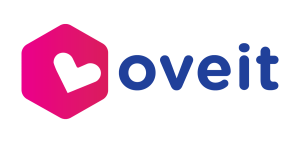Running a park or attraction means dealing with a constant balancing act: keeping guests happy, managing capacity, and hitting revenue targets. But if you’re selling the same ticket everywhere — online, through partners, and at the gate — you’re likely leaving money on the table and creating operational headaches.
That’s where multi-channel ticketing software comes in. Done right, it can transform the way you sell tickets, manage demand, and gather data.
The Problem with One-Size-Fits-All Ticketing #
When every ticket is identical across channels, three things happen:
- Revenue leaks – No ability to price differently for different audiences or times of day.
- Operational strain – Queues at peak times, while mornings or late afternoons sit underused.
- Lost insights – Walk-up sales generate no pre-visit data, making it harder to forecast and market effectively.
Partners such as OTAs and tour operators add another layer. Without tailored products and controls, they can push demand into already busy periods, leaving you scrambling to manage capacity.
Why Different Channels Need Different Tickets #
Each sales channel serves a different type of guest, at a different point in their buying journey:
1. Online (Your Website) #
For planners and pre-payers.
- Timed entry to control capacity
- Advance-purchase offers to lock in revenue
- Bundles (entry + meal + parking) to increase basket size
- Dynamic or off-peak pricing to spread demand
- Add-ons that boost per-guest spend
- Early data collection for better forecasting
2. Partners (OTAs, Tour Operators) #
For reach and market access.
- Wholesale SKUs and net rates
- Allotments with release-back rules
- Blackout dates to protect peak capacity
- Unique SKUs per partner for tracking and yield control
- Packaged experiences tailored to partner audiences
3. Gate (Walk-Up Sales) #
For immediacy and flexibility.
- General admission at a convenience price
- “After-3pm” or late-day tickets to fill unused capacity
- Quick purchase and scanning to reduce queues
- Staff-led upsells at the point of sale
Selling with Purpose #
Multi-channel ticketing software lets you design tickets for each channel intentionally, instead of forcing one product to do every job.
For example:
- Online-only: dated, timed tickets with bundled extras and dynamic pricing.
- Partner-only: wholesale group products with fixed or dynamic allotments.
- Gate-only: flexible GA tickets with contingency pricing for weather or unexpected demand.
This approach doesn’t just make sales more efficient — it makes guest experiences smoother.
The Payoff #
When parks use multi-channel ticketing software like Oveit, they see:
- Smoother visitor flow with fewer peaks and bottlenecks
- Higher yield per guest through targeted offers and bundles
- Controlled partner margins to protect profitability
- Better operational planning from real-time sales data
- Guests who spend less time in line and more time enjoying the park
Bottom line: Multi-channel ticketing isn’t about selling more tickets — it’s about selling the right ticket to the right guest through the right channel. The parks that master this will win on revenue, efficiency, and guest satisfaction.





